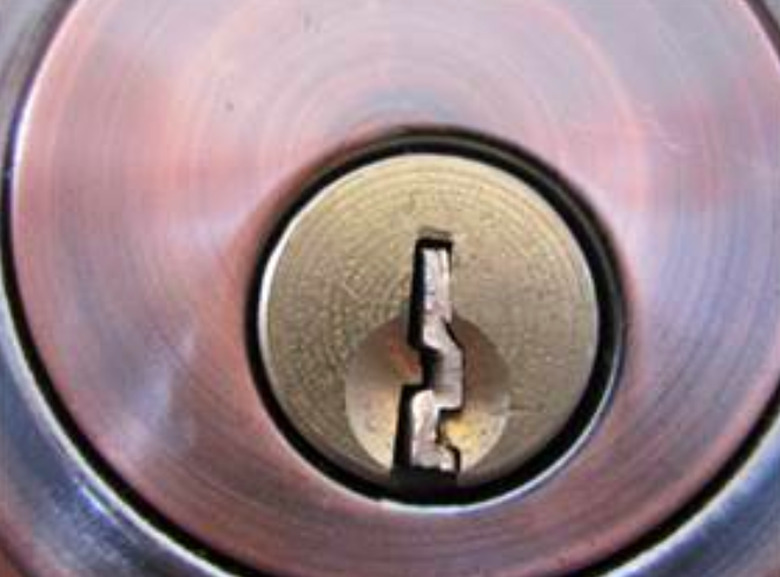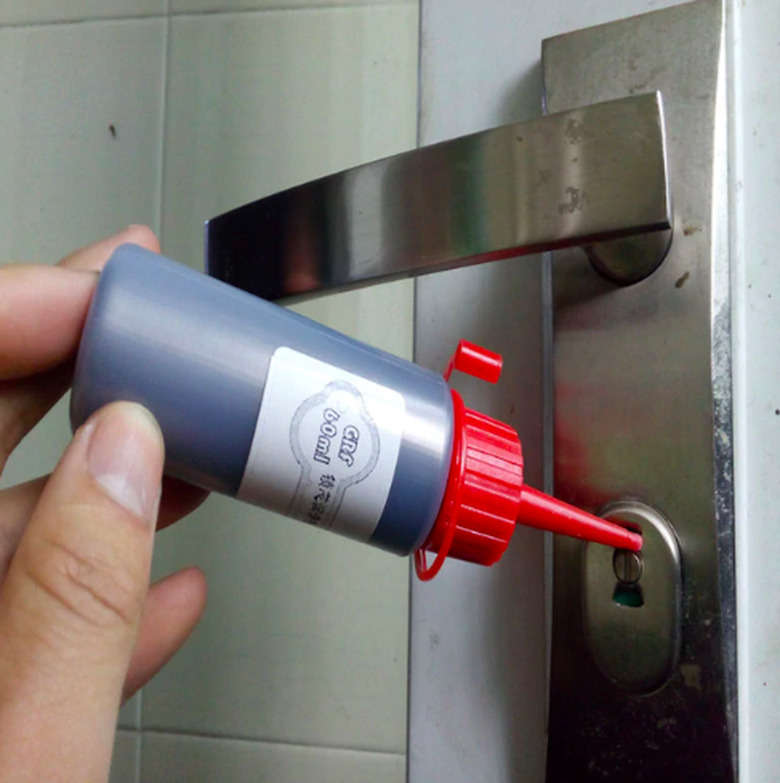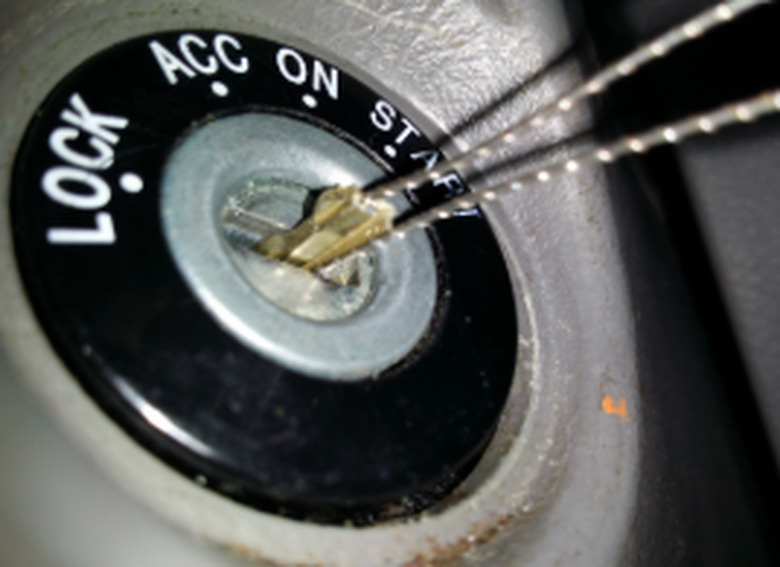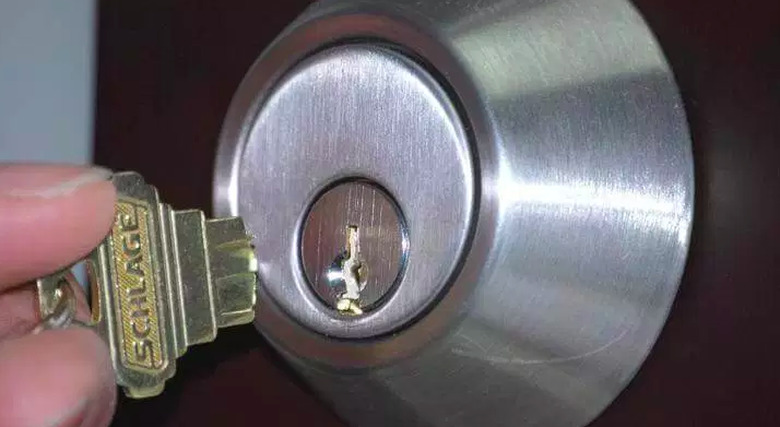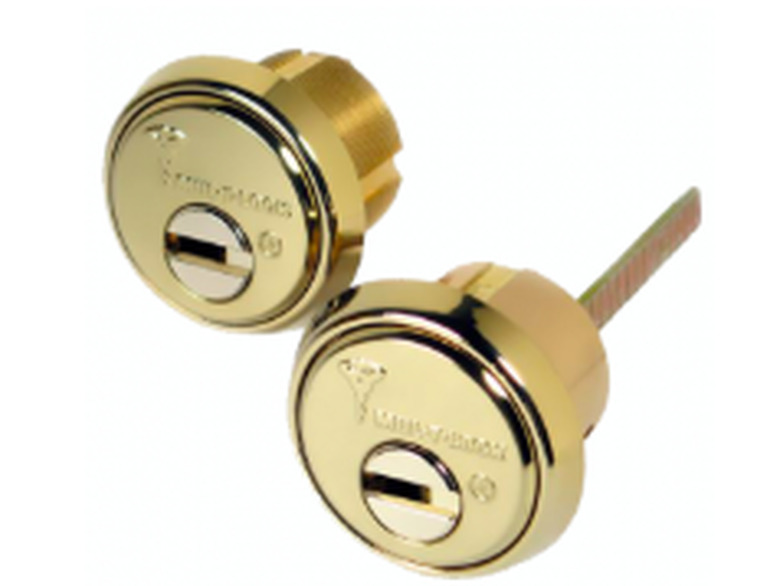How To Remove A Broken Key From A Lock
It's a cold day, and the lock on your front door is frozen and hard to turn. You torque the key a little too much and—snap!— it breaks off in the lock.
Now what? Whatever you do, don't push the broken half of the key in your hand into the lock to wedge it against the other half and try to turn the lock. At least don't do this right away, unless you absolutely have to open the door. It may work, and it may not, but it's guaranteed to force that broken part of the key deeper into the lock and make it all that much harder to retrieve.
A locksmith has a special tool for retrieving broken keys, but the average homeowner isn't likely to have one of these. If you can't or don't want to call a locksmith, you may be able to do the job with tools you have around the house. The goal is to move the key out of the lock just enough to allow you to grab it with needle-nose pliers and pull it out. Keep in mind that you can only do this when the lock cylinder core is not turned. If it is, you will have to return it to the open position before you can extract the key. It helps to lubricate the lock before you do anything else.
Start by Lubricating the Lock and Key
Start by Lubricating the Lock and Key
You can lubricate the lock with lubricating fluid, such as WD-40, but graphite powder works better. You may have trouble getting the powder between the key and the inside of the lock, though. The best bet is to hold the nozzle of the plastic tube against the lock opening and squeeze very sharply in the hope that the pressure will force the powder into the lock and around the broken key. If it appears the powder isn't penetrating, use spray lubricant. Because it's a liquid, it can seep into areas that a powder can't go.
It takes liquid spray lubricants a few minutes to dissolve the rust and dirt particles that cause sticking, so if you use one of these, you have to be patient. Graphite powder works right away, though, and you can begin extraction as soon as you apply it.
Tip
If the key is stuck in a padlock or some other moveable lock, you may be able to get the key to move by turning the lock so the opening is facing the ground and tapping it with a hammer. The chances of this working are better if you lubricate the key opening first.
The Probe and Grab Method
The Probe and Grab Method
Once the lock is lubricated, you should be able to return it to the open position with a flat-head screwdriver. When you insert the screwdriver into the lock, try to avoid contact with the broken key so you don't push it deeper into the lock. If the key is flush with the lock opening, and protruding far enough to grab with pliers, use the pliers to turn the lock—or better yet, use vice grips. If you can clamp them firmly onto the key, they'll work like a handle that allows it to pull the key out after turning the lock.
Once the lock is turned to the open position, the best way to remove a key that is inserted too deeply for pliers to work is to coax it out with a tool that has an edge that can grab the key. The tool has to be small enough to fit between the side of the key and the lockset A coping saw blade fits the bill perfectly. Cut the end off the blade so it will fit in the lock, then push it next to the key and try to latch the saw teeth onto the side of the key. Work the key backwards little by little until you can grab it with pliers. You may also be able to do the job with a sharp knife, a jeweler's file, a very small drill bit, or a jigsaw blade, depending on the size of the lock and the depth of the key.
Last Resorts—the Super Glue and Drill Methods
A key that makes a clean break can sometimes be glued back together, and the bond may hold long enough for you to pull the key out. This method is most likely to work if you can see the end of the key in the lock. Dab some super glue on the end of the key you're holding in your hand, then mate that end to its other half and hold it until the glue sets, which usually takes from 2 to 5 minutes. Pull gently, and you just might be successful. This method is risky because if you get glue on the lockset itself, you might find that the key in the lock gets bonded to it, making a bad situation even worse.
Another strategy is to try to drill a sideway hole into the protruding tip of the key with a 1/16th-inch drill bit. If you're successful, the hole will provide something to hook into so you can pull the key from the lock. It's easy to damage the lock with a drill, so this is definitely one of your last options, to be used only when calling a locksmith is out of the question. And it only works when the edge of the broken key is visible.
Disassemble the Lockset
Disassemble the Lockset
If the key is stuck in a door lock, and you're able to access the door from the other side, you can remove the doorknob and disassemble the lockset. This gives you access to the key cylinder and allows you to push the stuck key out from the other side. You may need disassembly instructions for your lockset model, but you should be able to find these on the manufacturer's website. These instructions are usually provided for re-keying purposes.
